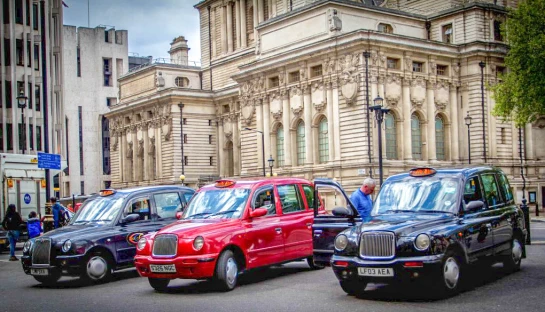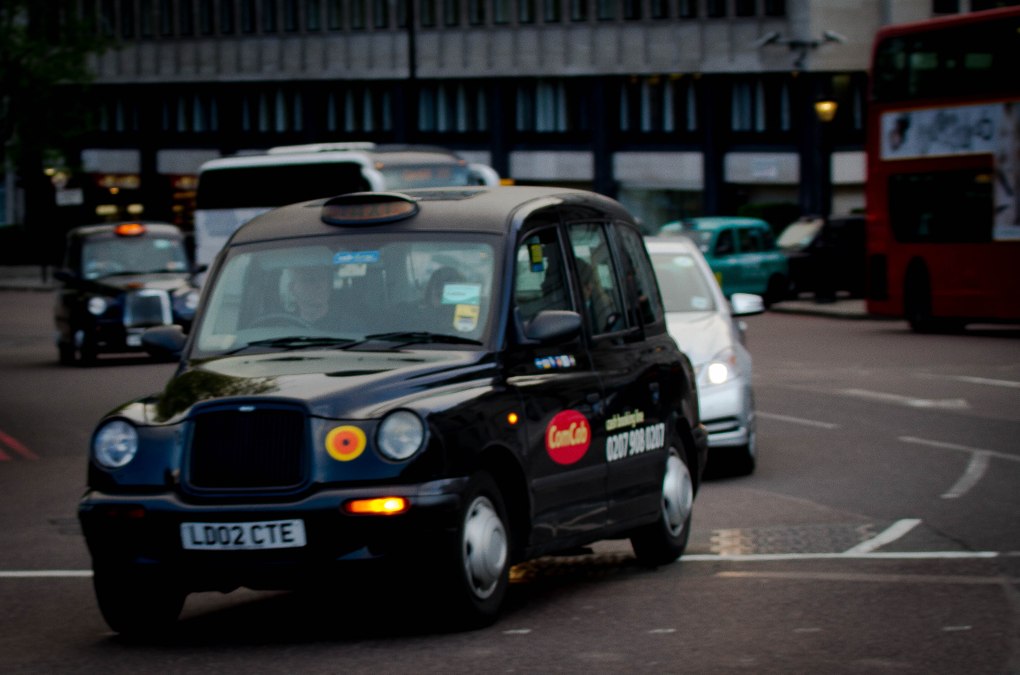 His name was Martin. He was the cabbie who pulled up to the right intersection at the right time and he was mine. I stepped out of the Mediterranean restaurant (very good, dry Turkish white wine, olives, hummus, herbed bread) and almost literally into Martin’s cab. I had been to the British Museum earlier. (Have you been? Oh, the priceless treasures!) It was pouring rain and I was far from my hotel room and late for a date to see “Mamma Mia.” Taking the Tube was not an option as it was 5pm and I knew that it would take forever to go from British Museum/Covent Garden area back to the Lancaster Gate or Paddington stations (the tube stops closest to my hotel). Martin was there. It was fate. This was especially fortuitous as I would have been SOAKED, having forgotten altogether about my umbrella, which I’d left in the restaurant when I rushed out (and which is hopefully now keeping some other potentially wet soul from that sorry state). Although a bit spendy, a cab was the only way to go. And, by the time we arrived at Sussex Gardens, 19 British pounds later, Martin and I were fast friends and I had learned some quite interesting and amazing facts about London cabbies and their cabs:
His name was Martin. He was the cabbie who pulled up to the right intersection at the right time and he was mine. I stepped out of the Mediterranean restaurant (very good, dry Turkish white wine, olives, hummus, herbed bread) and almost literally into Martin’s cab. I had been to the British Museum earlier. (Have you been? Oh, the priceless treasures!) It was pouring rain and I was far from my hotel room and late for a date to see “Mamma Mia.” Taking the Tube was not an option as it was 5pm and I knew that it would take forever to go from British Museum/Covent Garden area back to the Lancaster Gate or Paddington stations (the tube stops closest to my hotel). Martin was there. It was fate. This was especially fortuitous as I would have been SOAKED, having forgotten altogether about my umbrella, which I’d left in the restaurant when I rushed out (and which is hopefully now keeping some other potentially wet soul from that sorry state). Although a bit spendy, a cab was the only way to go. And, by the time we arrived at Sussex Gardens, 19 British pounds later, Martin and I were fast friends and I had learned some quite interesting and amazing facts about London cabbies and their cabs:
1. London cabbies are officially called…cabbies.
2. They are self-employed. They own their own cabs and the money they make is their own. Except, of course, the part that goes to taxes and licensing and fees and petrol and insurance and, etc…
3. This allows for lots of flexibility in scheduling which is the reason Martin chose to be a cabbie. He could take his kids to school, go to their football games, grab a nap…
4. It takes YEARS of study to be a cabbie. Martin studied for 3 1/2 years everyday before taking the myriad tests he had to take to do what he does.
5. Some of those tests, of course, were driving tests to make sure he was familiar with every road in London. Wow.
6. There are 25,000 cabbies in London.
7. Only the cars with the yellow lights on top are official London cabbies. These are the only ones ever to take because if you take one that does not have the yellow light on top, you might be harmed (read: harmed). There are 6-8 assaults a week in non-yellow-light cabs, often those that are pre-booked and come to pick you up at your hotel to take you to train stations, airports, etc. And, to repeat (which is what Martin did about 3 or 4 times), do not use cabs that do not have the official London cab yellow light on top!
8. When you sit in a London cab, notice the six-digit number on the door. This number matches the license plate. If your cabbie is rude, makes you uncomfortable, takes you the long way round, or is inappropriate in any way, make note of this number and call the police. They will be able to track the cabbie down and pound him into bangers and mash.
9. When the London Olympics were going on in 2012, the cabbies had very slow business because everyone in the city had been told to work from home to prevent horrible crowds. Martin says they did exactly that and the cab business was ironically, surprisingly, bad for a spell.
10. Cabbies are quadruple-licensed and highly-regulated. Although they own their own vehicles, the government monitors the meter and amount charged quite closely which allows for great integrity and legitimacy. You can trust your London cabbie!
11. You can use a credit card in the cab. There is a service fee of about 2 pounds, however.
12. Cabbies are trained and expected to know wonderful facts, tidbits, and trivia about London. For example, did you know that one of the best museums in all of London is the unsung London Museum? It’s true. Martin extolled its virtues. Why, there you can find out about the plague and the fire and the Romans and much more. I wish I had more time, I’d love to see it. One day…
13. London cabbies are also expected to be friendly and polite. How great is that? Wouldn’t it be loverly if we were all trained – and expected to be – nice? As a nurse, I can think of a few different populations that I wish had this training…
14. If you are not alone, say have two or three friends with you, you can tell the cabbie to turn off the meter and he/she can take you on a London tour for about 35 pounds per hour. That’s pretty cheap, splitting two or three ways. Plus, he’ll/she’ll be a great tour guide!
15. When you see those cabs with all the colorful and decorative painting or those with adverts on the sides, that means that the cabbie is being paid 1000 pounds a year to be a moving billboard. Remember, even with the artwork, as long as there is a yellow light on top, the cab is legit.
So, there you have it. It was a tremendously amiable and informative cab ride in the rain! Hope it’s helpful and if you have any additional information about London cabs, please do tell!





Pingback: Impressions Travelogue – Over 500 Views Today! |